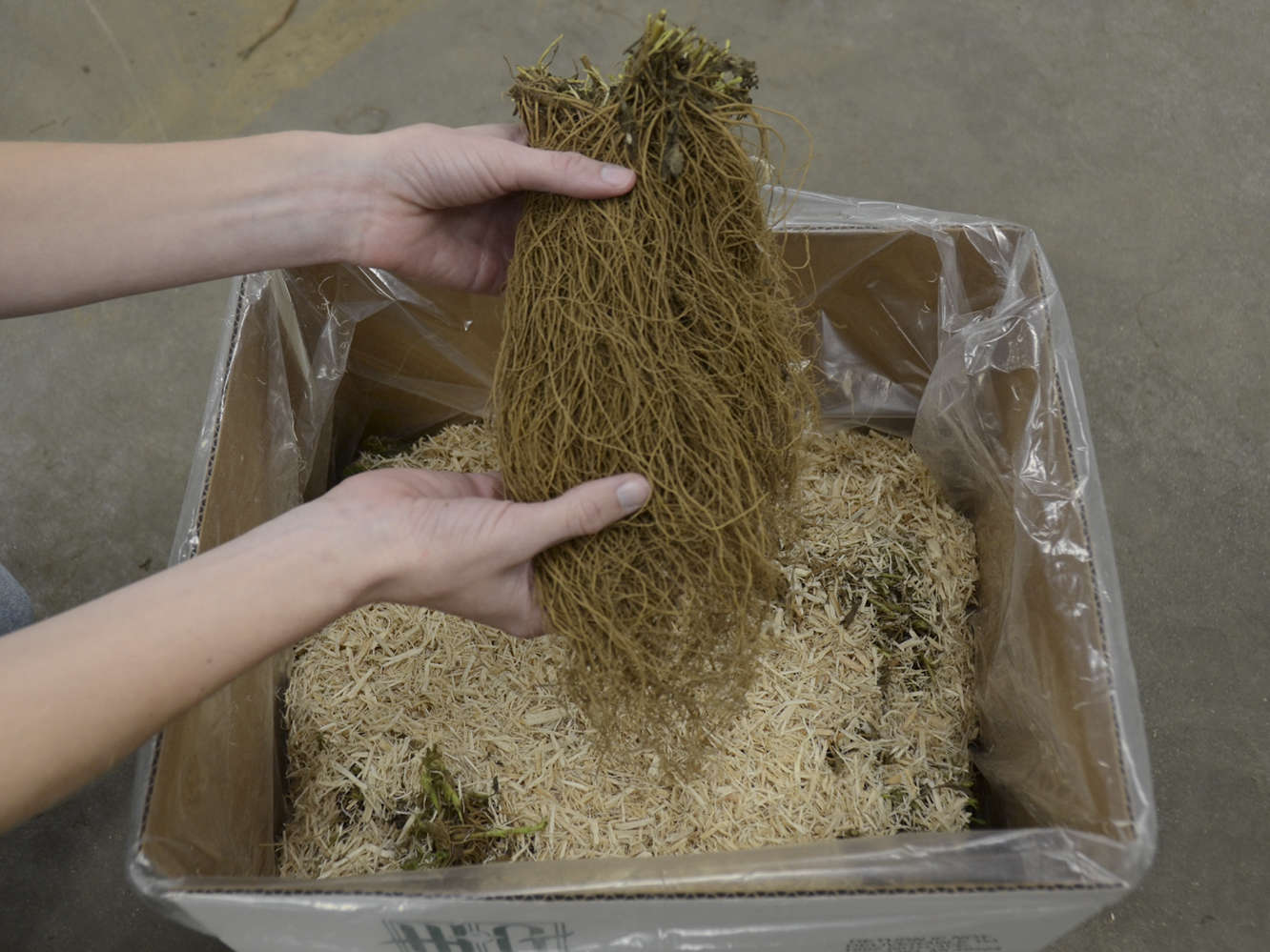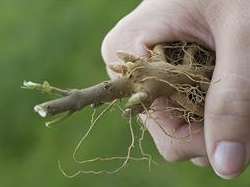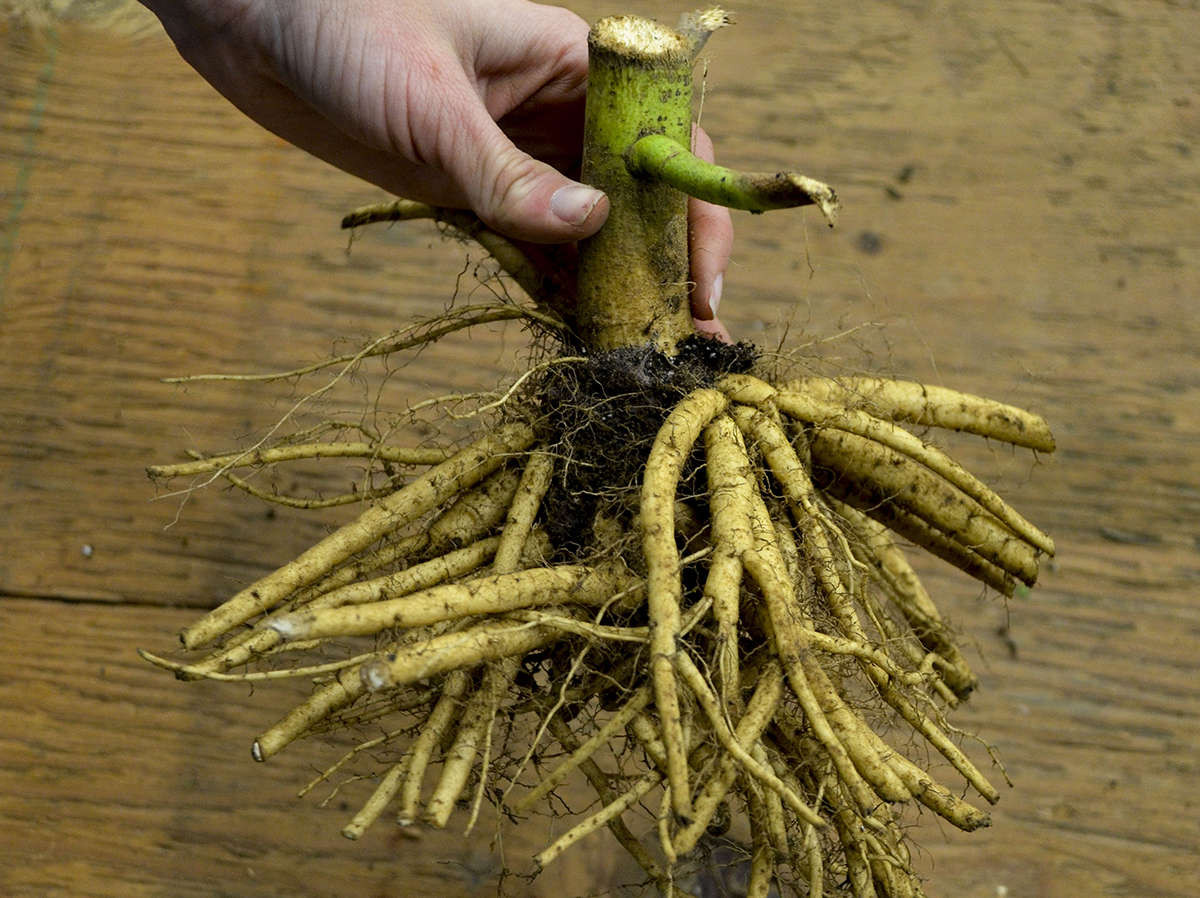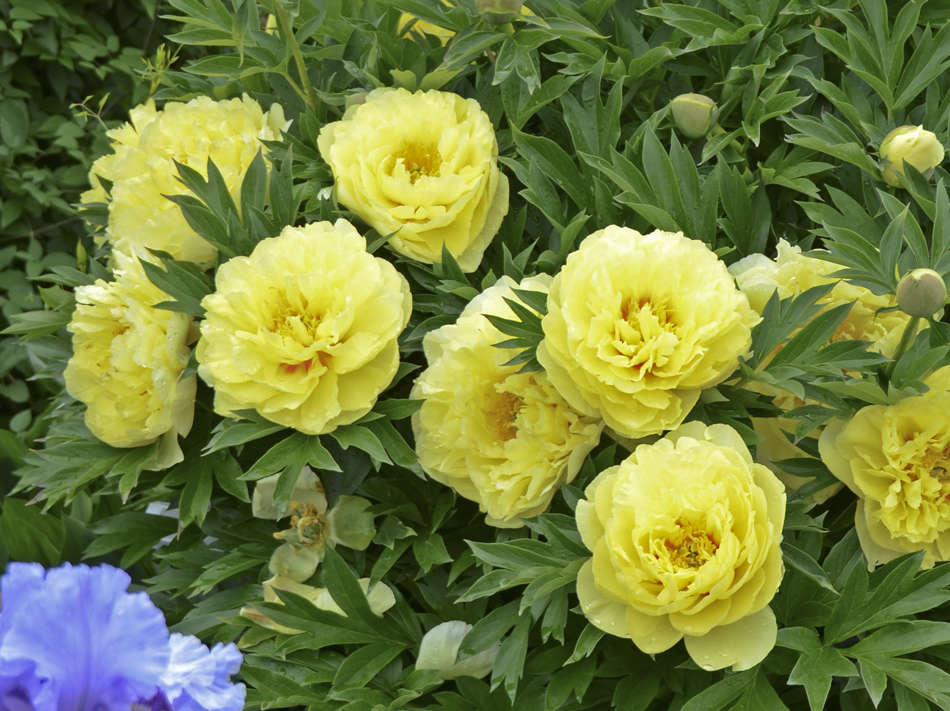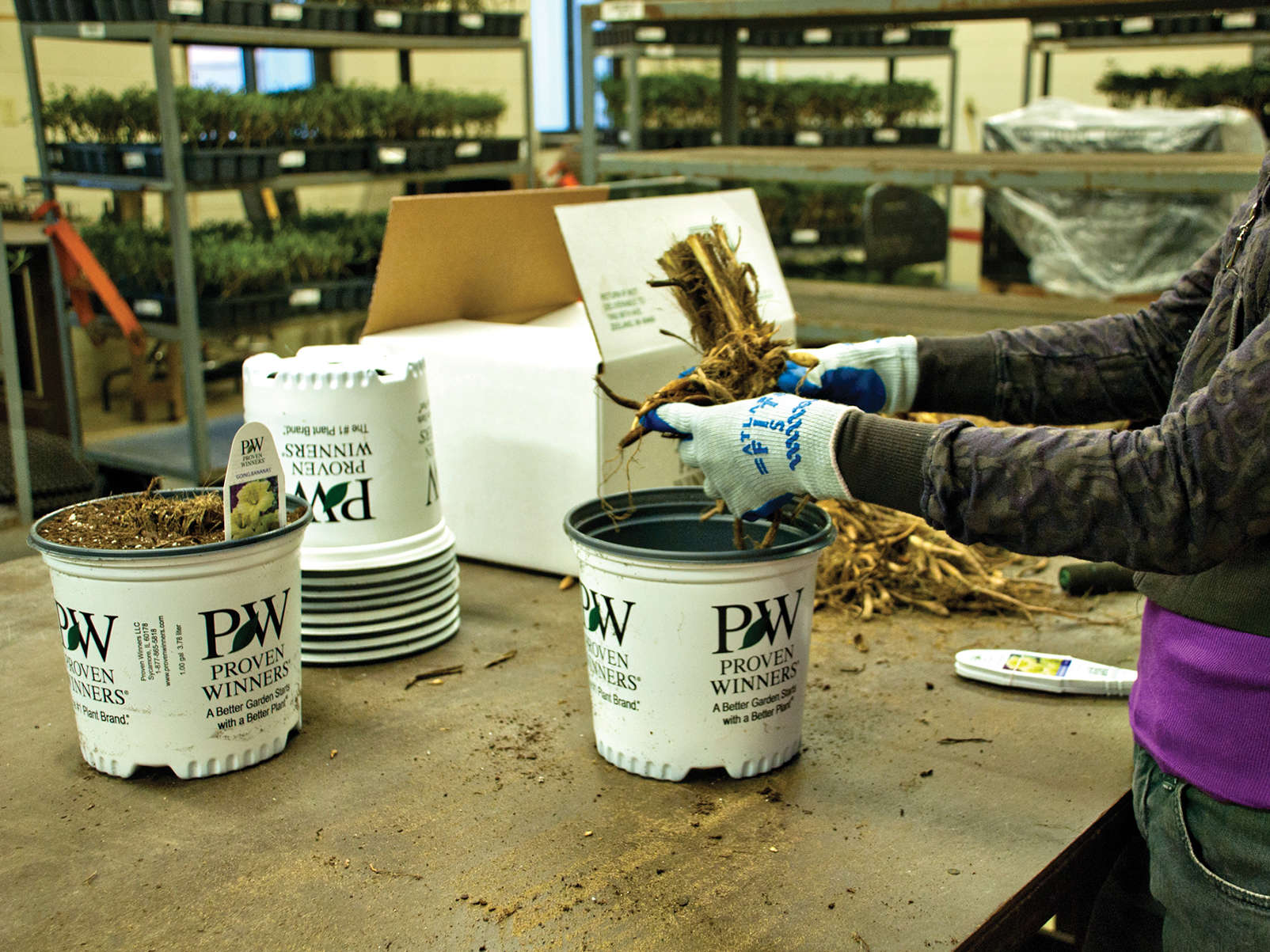Success with Peonies
02/17/2009
For well over a century, peonies have proven themselves to be beautiful yet tough, low maintenance perennials. Diana Wells, in her book 100 Flowers and How They Got Their Names, describes them so eloquently: "With great puffs of exorbitant bloom they heal the spirit, if not the body, every spring; and once with us they are here forever. Could any flower merit more hymns of praise?"
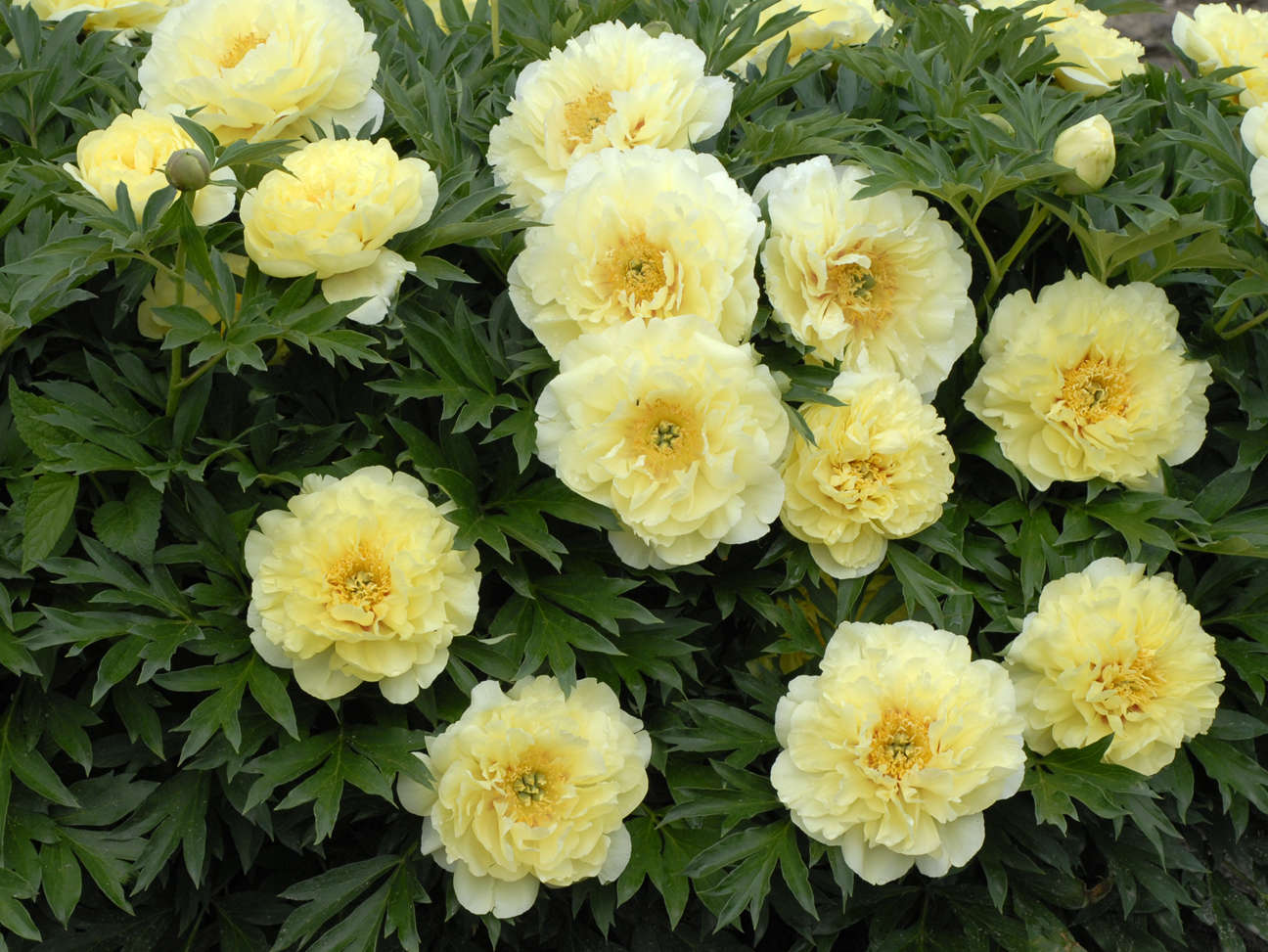 How to Handle Your Peonies when they Arrive:
How to Handle Your Peonies when they Arrive:

When you first receive your shipment of peonies, open the boxes and inspect the roots right away. If they look dry, soak them in water for 12 hours or overnight before planting. If you are not able to plant them right away, repack them in the materials in which they were shipped and store them in 38-42ºF temperatures for up to 10 days.
Growing on in Containers
Finish Size: 1 gallon container for 2/3 eye division or 2-3 gallon container for 3/5 eye division
Growing Medium: We suggest using any bark-based, well-drained, commercial soil-less mix.
Soil pH: 6.5-7.0
Planting Depth: Planting depth is absolutely critical to flowering performance. If the eyes are planted too shallow or too deep, they may not flower. This is the most common mistake that is made when planting peonies and is most often the reason that peonies fail to flower. The eyes must be planted to a depth of 1½ to 2 inches below the soil line.
Timing: Many growers wonder how late peonies can be potted up successfully. According to Renee Jaeger and Roy Klehm at Klehm’s Song Sparrow Farm and Nursery, it’s never really too late or too cold. Growers know they need to maintain a balance between air and soil temperatures.
Overwintering: It is best to overwinter potted peonies in a covered structure such as a greenhouse or covered polyhouse. They require 500 to 700 hours at 32-37ºF to be vernalized. After that, it is best to let them acclimate naturally to outdoor temperatures. Please note: Peonies received after January 1st have already been vernalized.
Temperature: After vernalization is complete, it is critical that peonies be grown cool. Klehm’s Song Sparrow recommends 45-50ºF days and cold nights of 35-40ºF. It may become necessary to run the fans in the greenhouse on sunny days to maintain this cooler temperature. When grown at higher temperatures, the plants slow their bud development and the flowers age faster.
Fertilizer:The spring after they are potted up, Klehm’s Song Sparrow recommends using a low rate fertilizer such as 18-6-8 at 100-150ppm at every other watering. Overfertilization can inhibit flowering.
Growing on in the Field
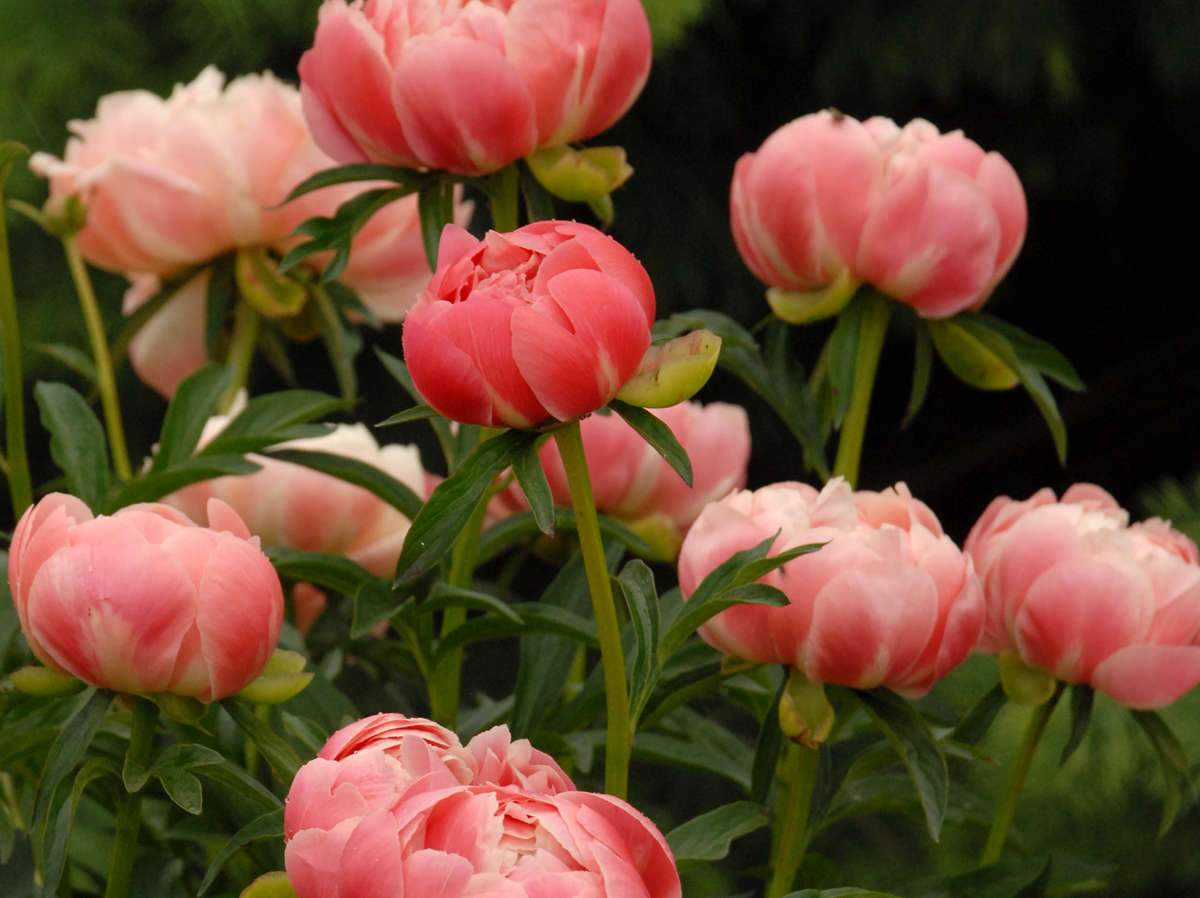
Mulch: Newly planted divisions, particularly those that are planted in late fall, should be mulched before winter arrives. This will help prevent heaving from nature’s freeze-thaw cycle.
Fertilizer:The spring after they are planted, Klehm’s Song Sparrow recommends using a 33-3-6 fertilizer applied on top of the mulch at a medium rate. No other fertilizing will be necessary for several years.
Top 10 Reasons Peonies Don't Flower
- They are planted too shallow or too deep.
- They are getting too much nitrogen.
- They are over or undernourished. Peonies thrive with little care and limited amounts of fertilizer.
- The buds were killed by a late frost, disease, or excessive heat. Southern growers should plant early flowering cultivars.
- There was not enough light for buds to form.
- The plants are too young or immature.
- The clumps are too large or overcrowded.
- They have been moved or divided too often.
- The plants were cut back before the foliage turned brown in the fall.
- The soil is too wet or too dry. Peonies require well-drained soil but also like to be watered down to the bottom of their roots. Let the soil dry out slightly between waterings.
